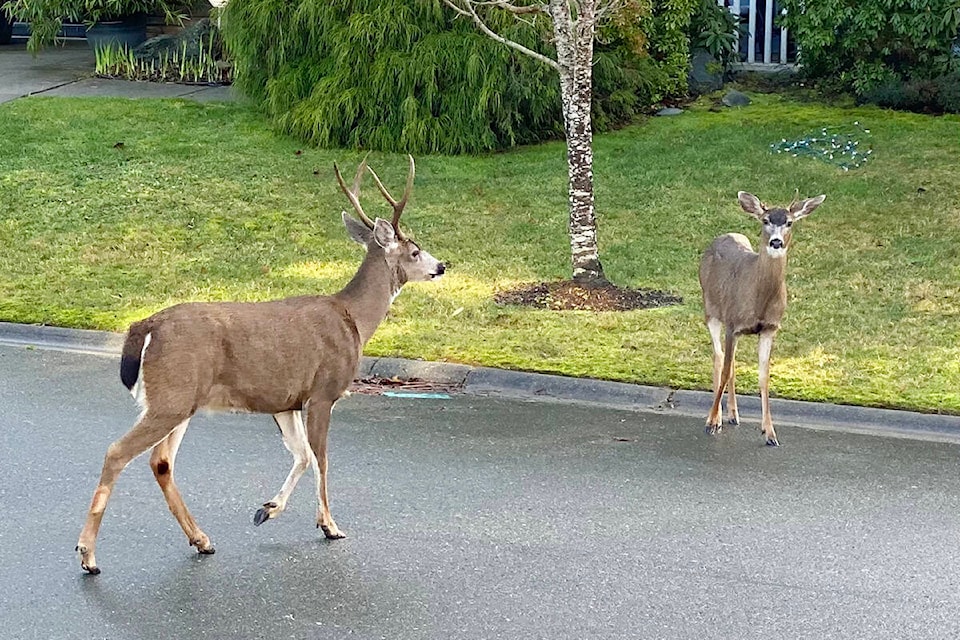It comes as no surprise here on the West Coast that October brings a darker, wetter commute. While it pays to be extra cautious with drivers, cyclists and other road users, it’s also essential to be alert to the possibility of deer who may be roadside, or attempting to cross.
Not only are deer much harder to see in the gloom, but it’s also the very time they’re most active – dusk and dawn. With that in mind, it’s imperative that both drivers slow down, and anticipate deer and other wildlife.
Lynette Browne, veterinarian with the Urban Wildlife Stewardship Society, which is working with Esquimalt and Oak Bay on their deer management strategies, shares these vital tips:
- Slow down – This is especially important in areas deer are known to frequent.
- Scan ahead – From parked cars to buses, bikes and pedestrians, there’s a lot going on on our streets, even without wildlife. Always scan ahead and keep your eyes on high alert, especially at night.
- If you see one, expect more – Deer rarely travel alone, so if you see one, know that others are likely nearby.
- Expect the unexpected – Young deer may not recognize the potential risk vehicles pose, and may dart out, or be confused by headlights. Slick pavement can also cause deer to slip and fall in front of your vehicle when they try to jump away.
- Drive defensively – If a collision with wildlife seems imminent, avoid swerving your vehicle, as this can cause greater damage and personal injury. Instead, remove your foot from the accelerator and brake lightly, keeping the vehicle straight.
To alert others to the possibility of deer on or near the road, Esquimalt residents can pick up a free UWSS yard sign from municipal hall.
Bucks just looking for love
For bucks, fall is the season of love – a fact that can drive the hormone-happy creatures to distraction … and into the road.
While bucks are really only interested in does, do maintain your distance, as with any wildlife. Common buck behaviour includes rubbing their antlers on trees or fighting each other, but they’re not aggressive – just showing off for nearby females.
Because a deer’s natural response to danger is to run, always leave it an escape route and keep dogs on a leash andclose to you. Try to prevent barking, and walk away to provide distance from the deer. At home, always check your yard for deer before letting dogs out.
Deer contraception vaccines continue in Esquimalt
The Township’s immunocontraceptive program continues as part of its study designed to manage the deer population and limit negative interactions between residents and wildlife. Black collars with yellow tags identify control deer and those with black collars only have received the vaccine.
An array of cameras are also in place to help track deer as they move about the community.
The team will be looking for deer in Esquimalt through Oct. 31. To pre-emptively grant the team access to your property when deer are present, complete the survey confirming your consent and address at esquimalt.ca/node/7289. The team is working from 6:30 a.m. to noon daily – to assist the program by reporting deer on your property at these times, call 250-800-9986.
For more tips about living with urban deer, visit uwss.ca. Follow along with Esquimalt’s study at esquimalt.ca/urbandeer and at acmelab.ca/esquimaltdeer
READ MORE: Management program underway for Esquimalt’s urban deer
